What Is Yowie?
Posted by: Loren Coleman on June 22nd, 2008
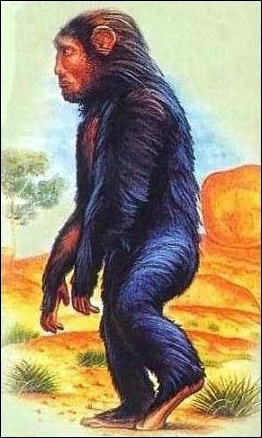
Allegedly, this is an artist’s impression of the Yowie. What is happening here? Are folks saying that the Yowie is nothing more than an Australian form of Bigfoot?
What kind of beast is the Yowie?
First, a little introduction to why I am asking…
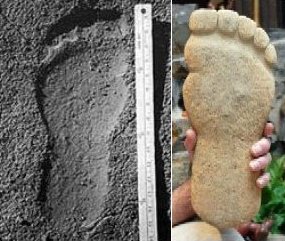
The Ray Wallace-created wooden tool, above, is compared with an often-published “Bigfoot” print, the Blue Creek track. Wallace’s hoaxed tracks have hurt the database of hominology, but they do not ultimately distract the field from the questions at hand. People still wonder about what is Bigfoot. (Dave Rubert photo of the wooden fake is used by permission.)
I wrote about the unfolding of the Ray Wallace story in my essay, “Bigfoot’s Bogus Burial: The Media and the Wallace Myths,” in the anthology, DarkLore Volume 1 (2007), edited by The Daily Grail’s Greg Taylor, who is based in Australia (obtainable via Amazon USA or Amazon UK).
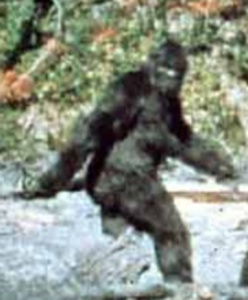
For the forthcoming DarkLore Volume 2, as my contribution (one of many), I am examining the various cryptozoological theories for what the Australian unknown hairy hominoid, the Yowie is and how it compares to Bigfoot. I’ve tentatively entitled my discussion, “Yowies: Are They the Bigfoot of Patterson-Gimlin, the Sasquatch of John Green and the Neo-Giants of Ivan Sanderson?” (Well, it’s a working title. LOL.)
The various kinds of images depicting the Yowie give you some idea of the diversity of the topic.
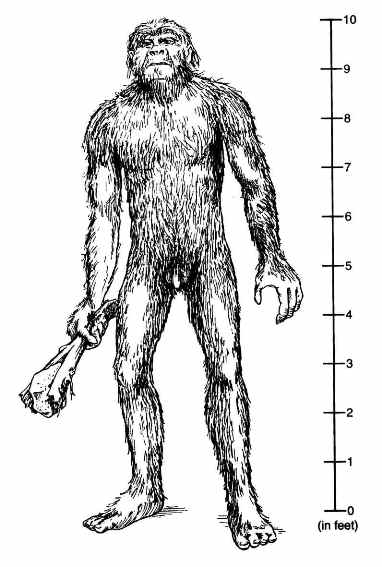
The creature above is a variety of the Yowie seen with a club, as viewed in Harry Trumbore’s drawing from The Field Guide to Bigfoot and Other Mystery Primates, 2006.
Is the Yowie something other than the classic Bigfoot?
I thought before I finished my essay, I’d be interested in throwing open the question here, for good insights, other points of view, and generally novel ideas that I may have missed. Your quotations, with your permission, might show up in my published treatment of the question, in DarkLore Volume 2.
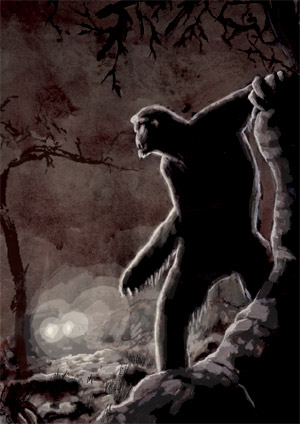
Yowie illustration (above) by Xavier Lemmens for Fortean Times.

This little drawing is of the Yowie called “The Bombala Anthropoid – a specimen of the tribe, drawn by Will Diamond from a description given by Mr. Charles Harper” as shown in The Sydney Sun of November 10, 1912.
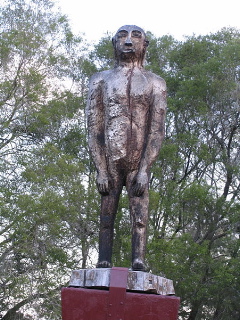
A wooden Yowie statue found in Kilcoy, Queensland, Australia.
Just as I did with the earlier “What Is Bigfoot?” blog posting, I am going with the assumption that the Yowie is an actual biological species, yet to be fully discovered and classified. Based on what you know, what do you think the Yowie is?
Click on the image above to make the Yowie larger, as seen here on the cover of The Yowie: In Search of Australia’s Bigfoot.
What fossil candidates might be responsible for the Yowie?
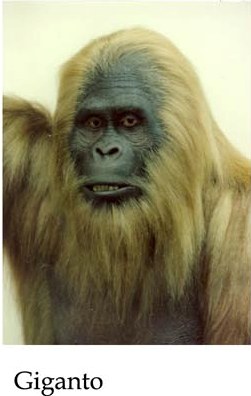
Gigantopithecus? Reconstruction by William Munns.
When Yowie is discovered and classified, do you speculate that they will be the same species as Sasquatch, and merely different only in terms of representing a geographic subspecies?

Paranthropus? (directly above and below). Reconstructions by William Munns.
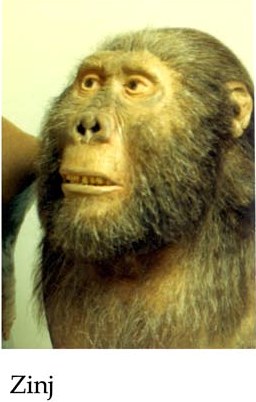
Are the Yowies relatives of the Aborigines, misidentified and said to be covered with hair?
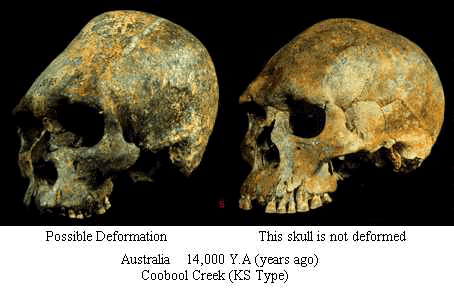
Perhaps Yowies are merely evolved Kow Swamp hominids (the skulls of the Kow Swamp/Coobool population being shown above)?
Or are Yowies completely unlike Bigfoot, indeed, a different species?
Are Yowie more closely related to Yeti? Or to Asia’s Malaysian unknown hairy primates?
To orangutans? To Orang Pendek?
Or even have links to African unknown hominoids?
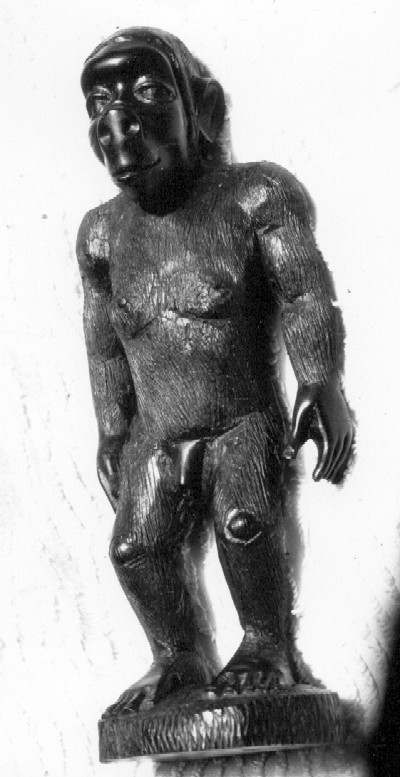
Is there a link to this wooden representation of a Proto-Pygmy, the Agogwe from Africa.
Or do Yowies look like unknown hominoids from elsewhere?
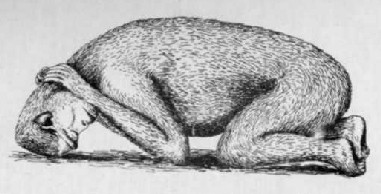
This is the sleeping position of an Almas seen in the Gobi Desert, Mongolia.
Are Yowie more hominid than pongid?
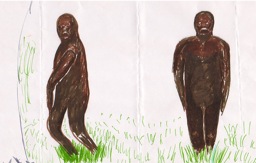
This is a recent eyewitness drawing of a Yowie from Australia.
Please note that a close look at the Agogwe, the Almas, the wooden Kilcoy Yowie, and the above illustrated Yowie all appear to have calluses on their knees, which have been explained by the Russians as a result of the above shown sleeping position.
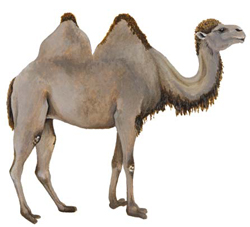
Intriguingly, these heavily callused knees are sometimes referred to as “camel knees,” because of their obvious likeness to the knees of camels. The hardening of the skin of the knees in camels is due to the evolutionary fact that the camel’s knees (as shown in the Bactrian above) were adapted for bending down on the sands of its native Gobi desert, to rest and sleep.
But then there are some bizarre illustrations of what some people say Yowie looks like.

This drawing of a Yowie was created by Michael Skelton and his daughter after an alleged encounter near Victoria, Australia, in 2006.
This confusing landscape needs your insights.
What are your thoughts?
Let your opinions and speculations fly.
A challenge: The posting “What Is Bigfoot?” (which was done in response to Bill Munns sharing his reconstructions with me) got a little over 50 comments.
Let’s see if you can send along more than that for this “What is Yowie?” question, which pulls in the whole world on this issue!
Australians, Australasians, and Asians, let’s hear from you! North American and European Bigfoot students, do you think Sasquatch and Yowie are kissing cousins?
About Loren Coleman
Loren Coleman is one of the world’s leading cryptozoologists, some say “the” leading living cryptozoologist. Certainly, he is acknowledged as the current living American researcher and writer who has most popularized cryptozoology in the late 20th and early 21st centuries.
Starting his fieldwork and investigations in 1960, after traveling and trekking extensively in pursuit of cryptozoological mysteries, Coleman began writing to share his experiences in 1969. An honorary member of Ivan T. Sanderson’s Society for the Investigation of the Unexplained in the 1970s, Coleman has been bestowed with similar honorary memberships of the North Idaho College Cryptozoology Club in 1983, and in subsequent years, that of the British Columbia Scientific Cryptozoology Club, CryptoSafari International, and other international organizations. He was also a Life Member and Benefactor of the International Society of Cryptozoology (now-defunct).
Loren Coleman’s daily blog, as a member of the Cryptomundo Team, served as an ongoing avenue of communication for the ever-growing body of cryptozoo news from 2005 through 2013. He returned as an infrequent contributor beginning Halloween week of 2015.
Coleman is the founder in 2003, and current director of the International Cryptozoology Museum in Portland, Maine.

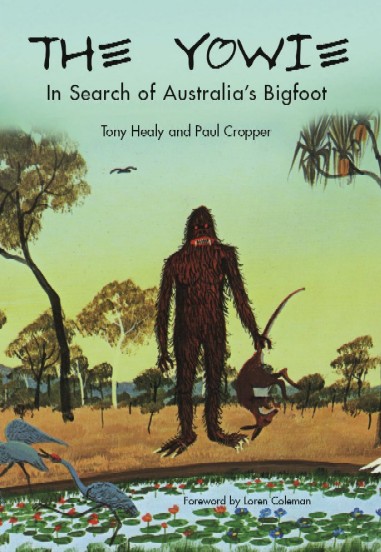









I make no claims to be an expert on primates but I have always wondered if these creatures are all the same species but just adapted to their environments. Such as Europeans were shorter and stalkier to live in the cold compared to Africans who’s darker skin protected them from the sun (rough examples). I have always thought about this as the Yeti, Sasquatch, Skunk Ape etc. are all the same species but they have some physical differences to better suit them to their environments. I am open to other ideas but that has always just made sense to me.
I forgot, good luck with the book Loren I am looking forward to its completion and being able to check it out. I’m off to bed. ‘Night everyone.
The Yowie could very well turn out to be related to sasquatch, yeti, yeren, skunk ape, orang pendek, or almas. It could also be a living species of hominid that is thought to be extinct. There is one thing about the Yowie that has always peaked my curiosity. How did it get to Australia? Looking forward to further speculation.
I wish you the best on your book Mr. Coleman.
personally I tend to go for the theory of convergent evolution, which is so prevalent in Australia.
I believe the Yowie to be a convergent marsupial species of ape, very similar to Bigfoot.
The marsupial Cat took the place of the Big Cats, The Thylacine – took the place of wolves and right down through the niches. There is no reason why a marsupial form of ape should not have evolved to fill that niche as well.
This leads me to the New Zealand Moehau, people often ask how this creature could be somewhere as isolated as New Zealand but perhaps they were present on Zelandia – the piece of gondwana that broke off in the late Cretaceous.
Yes, I am saying this species could be far older than man.
This may explain some of the anomalous footprints found with dinosaur tracks.
Essentially I’m sticking with a very ancient species of Marsupial Ape.
Tony Lucas
NZ Cryptozoologist
nzcryptozoologist,
Wow. You’d rather come up with a new species, that co-existed with dinosaurs (are you talking 65 million years ago?), that had feet identical to humans, than consider the possibility of a younger earth.
Btw, your suggestion (if I understand it correctly) is far from compatible with any current evolutionary model.
Atheism is a crutch for people who can’t handle the reality of God.
Loren,
Did you say “LOL”? 🙂
In answer to the question–
I expect that Sasquatch, Yeti, Yowie, Almas, etc. represent more than one species. I’m not saying that these four examples represent four different species–I’m just saying that among these four, there is probably more than one species.
The Michael Skelton/daughter drawing looks like it was inspired by artist Michael Whelan’s pictures of author H. Beam Piper’s fictional aliens, Fuzzies.
Well, there is a huge problem given the location of Australia. This continent was for a very long time separated from the mainland, and all native animals which live there are either descendents of animals which lived there already before the separation, or are descendents of animals which crossed the sea, for example the complex of monitors, whose ancestors reached Australia in comparably early times from Asia.
Among placental mammals there are only bats which did fly of course there and many small rodents whose ancestors most probably crossed the sea on floating trees or similar things. The fact that there are no other non native placental mammals shows very well that there was never an actual land-bridge.
The ancestors of modern aborigines had also to cross the sea, even given the fact that at earlier times when the level of the seas was not as high as today, the distance from South-East-Asia was much smaller to Australia. That means they had to built boats, at least very primitive ones, to come over the ocean. But that´s a problem, as this needs a lot of intelligence.
Apes don´t build floats, as well as other animals too (okay, some ants do), and I have really doubts that early humanoids at the edge of man-apes ever constructed floats to cross the sea. Driftwood is also very unprobable as a way to transport any apes or humanoids this long way to Australia, especially as the origin of a whole population.
Primates are in general only seen on islands which had once a conncetion with the mainland. The malagasy lemurs, which shows all a common ancestors, are among the very few exceptions. But their ancestors were also most probably very small animals and able to cross the sea on floating trees, which could have housed a complete family.
But in a biogeographical sense, it is nearly impossible that a large primate-like humanoid ever came to Australia.
So if the Yowie would exist, it had to have an Australian origin. But there is no marsupial which has any resemblance to an ape or even a humanoid, especially in the way of locomotion.
Karl Shuker once proposed the extinct diptrodont Hulitherium as origin of ape-like cryptids of Australia. This is a nearly unknown giant marsupial, about the size of a brown bear. It seems that there are no picutres or photos of it online anymore, and nearly no information about it. I remember that I saw a reconstruction of it some years ago. It was shown as something which looked a bit like a cross between a a wombat and a very short-faced bear, with a vaguely ape-like apperance. But the guy which draw it, made also a lot of drawings which are far away of the actual appearnces of the depicted animals, so I would not give too much on it.
But even if Hulitherium had vaguely ape-like appearance, there are many problems, especially that it hardly walked on two legs.
Closest thing your going to get to a Hulitherium is Zygomaturus, which is in the same family. You get an idea what this animal looked like here.
Another possibility is the Possum, which has some similarities to monkeys.
The most obvious explanation for the Yowie would seem to be convergent evolution, but there isn’t really any solid evidence for a marsupial ape. Maybe Orang Pendek is a better bet? But we’re still left with the question of how it got there.
No easy answers until somebody catches one!
First off, we are talking about Australia. How many native animals are cousins to normal groups outside Australia? Most of the animals that live in Australia have their little quirks. As for Yowie, well, the reports I have heard of and read make it out to be some sort of Sasquatch. Although I do believe there has been more mystery around the Yowie simply because people have seen one and then it’s gone. Sometimes even without prints. Okay, Loren wants to stick to a biological being living in Australia. That first drawing makes the impression that Yowies are more towards human than ape. The intelligence necessary to split open wood and place a rock between goes well beyond just grabbing a stick and flailing it around (kinda like what chimps do). That club will kill, even if the yowie was weak. I think they are a different type of bipedal ape than sasquatch, if for nothing else, because they seem skinnier. Look thru every drawing or photo of yowies and then look at anything about big foot. Big foot is bigger in every way, except maybe height. Yowies are usually depicted as tall and skinny. Their hair seems relatively short all over. More like the last 2 apes above (not Gigantopithecus). Gigantopithecus’ hair is too long for yowie.
Good morning Cryptos…
I don’t know much about the Yowie other than folks down under claim they exist. Just one more reason…I’m not apt to visit, too many venomous critters, bubeating crocs, Great Whites and Fosters…JMHO
Reverend Strone in New Zealand, is an excellent graphic artist who worked on the LOTR/Zena series…he is active in sasquatchery, I will ask him to lend his considerable talent to this blog. He did a wonderful job on the squatch graphics for Melissa Hovey’s “Search for Bigfoot” blog.
I would invite folks interested in Squatch and Yowie to listen to the numerous Blog talk radio, Talk Shoe and Now Live, internet shows…google them too….they are informative with user friendly chat rooms.
live and let live…g’day
ole bub and the dawgs
Morning Loren and all Posters,
Good question about the origin of Yowie. I had email contact with Dean Harrison, a researcher from down under who had a close encounter with a Yowie.
Dean relayed to me that he sent a really decent footprint cast to Professor Meldrum around 2000 or so. The Professor relayed back to him that the cast appeared to be the same species as Bigfoot or the same genus.
Therefore a conclusion can be drawn that perhaps the Yowie shares the same origin as Bigfoot. Loren’s theory about the origin of Bigfoot is a logical candidate for the Yowie. My best
Bake Neko is on the right track. Cousin to Sasquatch, with some modifications, so to speak.
Basically cousins.
I do not presume to know much about the Yowie; nevertheless, I would like to point all of you to this recent news that seems to contradict the validity of the current theory of how Australia got separated from the ancient continent of Gondwana:
http://afp.google.com/article/ALeqM5iXknj8Q9E4hhzb_1i1shee56l0yg
Although it’s obvious that the article makes reference of fossil evidence pertaining to the dinosaur era, the important thing to consider is, IMO, this little part:
So my point is that we may have to revise our notions of just how isolated the story of Australia has been, before making assumptions as to the possible origin of the Yowie.
Hope this helps 🙂
If it weren’t for the occasional sighting by a reputable person, I would be inclined to think that it was folklore plus psychology.
Do the Australians have folklore about these critters from dreamtime? Or is it mainly a European thing?
The Melanesians across the straits have tales of such creatures that we’ve discussed here before, and tales remain when a people move somewhere else.
The psychology is that humans always have tales of giants, monsters and little people. The latter might be related to dolls. It is part of human imagination. Of course as the Floresians show, this doesn’t mean that actual creatures resembling them don’t exist or never existed.
Another interesting “what is…” article.
Is there any information as to how long the aboriginal stories of the yowie (and similiar cryptids) have been in existance. Are they old or relatively new traditions?
I only ask because Loren’s inclusion of the image of the camel got me thinking.
Face on, at a distance, could it be possible that a camel could explain SOME of the sightings? Could a face on ungulate be mistaken, in certain circumstances, for a bipedal animal?
Especially if it was unfamiliar (as an introduced species like a camel certainly would be).
This idea does hit the rocks when thinking of non-native sightnings though…
The sleeping Almas above also looks positioned similarily to the resting position of camelids, and as Loren notes, there is a similarity between the observed knee callouses, divergent evolutionary behaviour or mis-identification.
I’m not suggesting this is what i beleive, jsut the first few things that popped into my head after reading the article.
What’s the Yowie? Well it ain’t a horse!
I don’t think.
My point?
One should never be TOO sure about anything. Particularly when one deduces from “facts” like what we read from geology, or from the fossil record. Particularly when those “facts” are more like: that seems to be what happened, given what all we know at the moment.
(And as red_pill_junkie shows us above: what we know at the moment is provisional only, backed by a general current consensus on how to read the evidence.)
One thing that gives me trouble with the Yowie is that it sure sounds like a primate. If it’s not, all I can think – given what we know about Oz’s native mammals – is that it’s the marsupial analogue to same. Or – again given what we know – primate evolution goes back way farther than we think, and(/or) there are huge gaps in what we know, or that the Yowie got there the way humans did, by sea.
Even that last sentence is hard for me sometimes – with regard to humans, not the Yowie – given how many aboriginal cultures of Australia don’t seem to have a nautical bone in them. We know how the Maori got to NZ; their seafaring culture is quite evident. But the Aborigines? Granted, once you’re in the desert, who needs a boat? Similar volte-faces, and similar mysteries, abound in human history.
(And animal history. My horse reference above refers to the apparent sudden departure of the horse, which evolved in North America, from our continent during the Pleistocene. What was up there? Really determined paleo-herdsmen? One-way signs for horses? Or just a fossil record whose incompleteness misleads us?)
But still.
And I’m pretty sure the Yowie didn’t raft over on a log.
But then again – and I accuse almost everyone with a skeptical take on the sasquatch of this, and I seem to be right in that case – I’m likely ignorant of relevant evidence.
I don’t know what it is. But “marsupial primate” seems like less of a stretch to me than “Big Bang, and everything else just rolled out from there.”
What is (the) Yowie? Surely that’s a rhetorical question.
Last I heard, I was under the impression that there were three different kinds: small, big, and humongous.
Anyway, I’ll defer to the position of an expert, Tony Healy, author of the book shown above, who said of some accounts of the creature indicate that the Yowie is:
******************
I suppose such talk makes as much sense as speculation regarding the emergence of a marsupial version of a proto-human produced via evolutionary convergence.
I was a visitor at a recent TBRC meeting. Also there was a very bizarre individual who interjected himself into the meeting and claimed that Australia has both yowies and sasquatches.
He went on to say that, in Australia, the 12-ft tall yowies, on open fire, roast the 8 ft tall sasquatches there. Needless to say, many an eyebrow was raised, as a few muffled chuckles were heard. Craig and the TBRC folks sort of politely nodded, smiled and quickly moved on (sort of like an adult would to a child who is telling a wild story).
I don’t know what yowies are, but to the strange dude at that meeting, they are some rowdy muthas who eat sasquatches for lunch.
(The guy was dead serious – I kid you not.)
i am no expert. But everyone seems to look to earthly explanations. I myself dont care how bigfoot got downunder. He could be interstellar or interdementional for all i care. I would just love to see one found …hopefully alive but even a fresh dead body would make all of those “Mainstream” scientists take notice and maybe they would finally realise they didn’t “Know It ALL.”
Scott,
If you read the bible correctly you will take notice that the Earth is not young. The bible actually follows the lines of what many scientist believe in regards to the age of earth. The bible itself mentions kingdoms existing and being destroyed by God, before man’s creation. It also points out man came first, then Adam and Eve who were no the first humans. This is all stuff you can read in your bible if you pay close attention to details. Here you go:
Gen 1:2 [(2a) = 1st half of verse]
2(a). And the earth was*1 without form*2, and void*3; and darkness*4 was upon the face of the deep*5 .*6 And the Spirit of God*7 moved upon the face of the waters. [Verse 2 Continues below]
1). was is the English translation of a Hebrew word (hayah) which means Became. In other words, the earth was not created without form and void, but that it became that way at some point in time after it was created.
Hebrew word #1961 hayah (haw-yaw); a primitive root [compare 1933]; to exist, i.e. be or become, come to pass (always emphatic, and not a mere copula or auxiliary)
*2). without form was translated from the Hebrew word (tohuw) that means: to lie waste, a desolation. You cannot lie waste or desolate something unless it was once in good condition and then at some later time it was destroyed.
Hebrew word #8414 tohuw (to’-hoo);
from an unused root meaning to lie waste; a desolation (of surface), i.e. desert; figuratively, a worthless thing; adverbially, in vain: KJV– confusion, empty place, without form, nothing, (thing of) nought, vain, vanity, waste, wilderness.
*3). void is translated from a Hebrew word (bohuw) that means: an indistinguishable ruin. You cannot have a ruin unless there was at first, something to ruin.
Hebrew word #922 bohuw (bo’-hoo);
from an unused root (meaning to be empty); a vacuity, i.e. (superficially) an undistinguishable ruin: KJV– emptiness, void.
*4). darkness (choshek) as it is used here means to become dark, to be darkened. You cannot darken something that was not lit in the first place.
Hebrew word #2822 choshek (kho-shek’);
from 2821; the dark; hence (literally) darkness; figuratively, misery, destruction, death, ignorance, sorrow, wickedness: KJV– dark (-ness), night, obscurity.
*5). deep, this corresponds with the description of the destruction of the first earth age by water in 2 Peter 3:5+6 (NOT Noah’s flood here.
Hebrew word #8415 tehowm (teh-home’); or tehom (teh-home’);
(usually feminine) from 1949; an abyss (as a surging mass of water), especially the deep (the main sea or the subterranean water-supply): KJV– deep (place), depth.
*6). There is a period at the end of this sentence. The following sentence marks the beginning of the rejuvenation into this (our current day) earth age.
*7). Spirit of God = The Holy Spirit; the Spirit of God IS the Holy Spirit.
Read this sites FAQ: http://biblestudysite.com/begin.htm You’ll be amazed at the truth.
“(The guy was dead serious – I kid you not.) ”
If he had an Aussie accent then he was probably pulling your leg. That’s how we kid people. Dead serious. 😉
AFA marsupial Yowies go, IMHO forget about it. It’s to far a stretch and zero fossil evidence of anything even close to convergent primates. Very few of our so called “convergent evolution” species look even remotely like the non marsupial Old or New World counterparts. Especially behaviour. Marsupials have got to be the dumbest animals you could meet. A kangaroo, for example, makes a sheep seem like an intellectual! Koalas are wacked out on eucalyptus oil (they’re all drunks) and wombats don’t go under fences, they walk through them.
I can’t say I buy the existence of the Yowie, it’s not well supported by indigenous Australian folklore or “history”. That doesn’t mean I don’t buy BF in the New World or similar in the Old World or even S.E. Asia. Remnant Thyalacines, sure. Remanant TC’s, maybe. But not the Yowie. I’d love to believe in it, it’d be great. But there’s to much going against the likelihood and, perhaps sadly, the local “Yowie” hunters leave a lot to be desired in terms of credibility in many cases. Rex Gilroy eat your heart out.
The big issue, new theories on landmass seperation included, is still arrival. Somebody said above that indigenous Australians in some places know very little or nothing about boat travel. That’s true, in the interior of the continent. But as the Tasmanian Aboriginals have shown us (or did show us as, like the Tasmanian Tiger they’re extinct due to our “hunting policies” too) it only takes ten thousand years to loose all sight of certain technologies. But a Yowie boating it here? I’d love to see that! 😉
Now. If somebody can come up with a way of connecting New Guinea to the Indonesian archipelago around the time of Homo Erectus et al *and* subsequently to Australia (as it was at one point) then we’d have something…
Despite the desire for some to reinterpret the simple meanings of the Bible and creation, there is really no need to wrest the scriptures for the Bible’s 6-day literal creation to match science, when science is honest.
If this yowie is, indeed, a real animal, and certainly there are many new species discovered on a regular basis, even large ones, it is possible that it would exist where it might seem out of place.
Before the flood, all the water was gathered together in one place, rather than oceans scattered about as they are today-not the Pangea idea, which requires some countries to be removed and some re-sized to fit, but rather, there was just no water in many places where there is today. Thus, animals, as well as humans, would be able to move from place to place easily. And even after the flood, of which there is a great amount of evidence, (i.e., marine fossils found on high mountains, even Everest), it was yet a couple hundred years before the waters filled what we know know as the oceans, during the time of Peleg, (Gen 10:25-“the earth was divided”, earth speaking of the actual land, not the world, as in the world’s system). Thus, animals from the flood, as well as humans, would be free to move about and relocate and settle here and there. After all the Lord commanded that they ‘go forth and multiply and subdue the earth”-thus it was God’s will that man move from place to place.
Also, marsupials are not just in the Asutralia area, as the common opossum in America is a marsupial, as well.
As for what Yowie would be-who knows? A great ape of some sort? A bear-type creature? Something completely unknown? Aliens? Fallen angels? A construct, (ala 6-million-dollar man bigfoot?) I guess we have to wait until one if captured before we will know.
From the descriptions I’ve heard of the Yowie’s behavior, I’ve came to the coonclusion that is a type of pongid ape, possibly related to gorillas or orangs. What really made me think this is I’ve read a few accounts of it walking on all fours.
I don’t know about connecting New Guinea to the Indonesian archipelago but when it comes to homo erectus there is starting to be evidence suggesting that the island of Flores had to be inhabited by boat, since it never was in contact with the Asian continent. The oldest finds from Flores date back to 800.000 years ago, a million years after erectus reached Asia.
If orang pendek or yowie is real, we might have the ancestor right here. Soo, I’ll stick to the floresiensis theory with yowie too.
If erectus reached flores by boat, then why not Australia as well?
The reason these creatures remain undiscovered is that they’re nocturnal. Also the arm bones of flores man the dminisi erectus show adaptation to moving in trees..
The only thing I find puzzling is the cranial capacity of flores men. How could they have mastered such skillful tool making and even sea faring with brains just a bit bigger than a chimp has?
There are at least two variants (perhaps more) scattered across the continent.
The smaller one is called Junjadee.
This one is said to be similar in size to the Orang Pendek and/or Ebu Gogo.
The larger one is simply called Yowie, with sizes comparable to Bigfoot.
The larger variety may or may not come in two variants, one that appears more human than ape, the other appears more ape than human.
The more humanlike variety is always seen walking upright.
The apelike variety often drops to all fours and “knuckle” runs into the scrub.
Just because Australia is isolated, does not preclude them being Hominids or Apes. The Koori (Aborigines) got here. I see no reason why a higher form of Ape or even Hominid couldn’t as well. It would have been just a tad harder is all.
Also remember, the Philippines, New Guinea, the Solomon Islands and other Melanesian Islands are also said to have their “forest Giants” as well. So, these particular cryptid species could well be scattered across a large part of this region.
More research needs to be done and of course, there are few researchers to do it and even less funding to do the research with. So the question will remain largely unanswered for some time to come.
I can’t help but wonder, looking at that reported sleeping position and the camel knees, why was this evolved? Is it better than lying in a nest or on one’s back? My personal thought is that it may have evolved among many anthropoid primates in order the better escape from nocturnal predators. If you put yourself in this position you will find it to be easy to launch yourself forward into a running position.
I would think that this would be likely to evolve in Australia more than anywhere else because there are so many large anthrophagic carnivores (i.e., thylacosmiloids, crocodilians, Varanus prisca) there whereas in, say Mongolia, i can’t think of very many.
This doesn’t actually help in the question of identity, but I always wondered why unknown anthropoids sleep like this. I have always felt that there were many kinds of unknown primates in Australia, but these camel-kneed fellows might actually have originated in Australia, and moved north to the Gobi. That is my theory to explain the knee-sleeping behavior. As for identity, I feel that the camel-kneed ones are some primitive offshoot of the earliest members of the genus Homo, whearas the Yeti is a surviving Gigantopithecus and Bigfoot might be distantly related to the earliest hominoids.
Alton Higgins: your post deserves comment.
Not sure where your opinion falls on the reality of the Yowie, but I might be able to make a guess.
Per Tony Healey’s: “If we reject everything about the Yowie that smacks of the paranormal we’d have to sweep 20 per cent of the accumulated data under the carpet.”
All I can say is: you can probably say the same, if not worse, for the sasquatch, if you’re counting (1) every obvious prank or lie; (2) all the “paranormal” accounts; (3) all “other,” i.e., can’t categorize them as the first two but they’re not much if anything to go on.
You still have what is left, which is a LOT, and which – many think, me included – seems to point to the reality of the animal.
Fact is, the “tabloid life” of crypto-critters brings all kinds of people out of the woodwork with “I’ve seen one.”
Many of whom may actually have done so.
Guess that’s where I am on the Yowie. If I had to bet house and salary on the sasquatch, up or down, right now, I would bet it exists. But then, I’m more famiilar with what’s left after the woodwork has yielded, well, everything else.
Not so much with the Yowie, given (especially) the complicating factors for nonhuman primates in Australia.
DWA,
What really concerns me is that we have an individual widely considered as one of the foremost experts on the yowie phenomenon who says,
“After 25 years on the trail, I really suspect that the American Indians, the Australian Aborigines and some of the whacked-out American researchers are right: that is, that we’re dealing with shape-shifting phantoms here that will probably remain beyond human comprehension.”
Without delving into the broad strokes with which he erroneously characterized Native American perspectives, I cannot, as a biologist, accept supernatural or intellectually inaccessible rationalizations for yowie sightings. If the same sort of comments had been made by (say) a Jeff Meldrum or John Bindernagel, one would be justified in dismissing them as the ravings of a non-scientist and to conclude that the subject of his interest had no merit.
As for the paranormal aspect and the idea that some significant percentage of sasquatch sighting report submissions include some “paranormal” component, I have not seen that. In my years with the BFRO and now the TBRC, I’ve reviewed thousands of reports. I’d say that far less than one percent smack of the supernatural. That differs drastically from Healy’s 20% estimate.
While acknowledging the likelihood that many Internet posted and/or published sasquatch sighting reports represent mistakes, misidentifications, or hoaxes, I remain confident that there is a biological basis to the sasquatch phenomenon.
I cannot say that I feel the same way with regard to the existence of the yowie, especially when, as noted, a primary researcher invokes paranormal explanations.
While it’s not impossible for a large animal to migrate between landmasses by sea (ground sloths did it several times long before North and South America merged, iirc), it would be very unusual…
RamblinglyVeryBored,
I understand the appeal in developing constructs in which Scripture and popular thought are reconciled. It’s almost as though you can have your cake and eat it too.
However, our Lord Jesus Christ calls us to unflinching allegiance. And He’s worth it.
I’m afraid that you have been deceived by the site that you copied and pasted. As soon as I checked it out, I recognized it for what it is: the site of a “lone ranger theologian.” There are many such sites on the Web.
This guy espouses many positions that have either fallen out of favor with, or recognized as heresy by credible evangelical scholars (KJV Onlyism, etc.).
Without getting into the technicalities of the Hebrew, let me just state that the language does NOT preclude 6 day creationism. It is intellectually tenuous and theologically impossible to read into Genesis an entire pre-Adamic history on the basis of linking verbs that CAN be used in the way that you argue for.
Are you arguing that the material of the universe existed before the 6 days of “forming”? If so, you’ll have to reckon with Ex. 20:11.
Are you arguing that plants existed for more than 24 hrs. apart from the sun?
Most significantly, if there was a pre-Adamic race that was “ruined,” then there was death before the Fall. What does that do to your theology? What does that mean for Romans ch. 5?
yes it’s a Yowie. lol
well i think it’s a primate with a long history.
but none the less it will be caught
amen?. 😀
i think it’s an ape. but very well can be a monkey..
apes are built except for chimpanzee their skinny.. and when i mean built i mean like gorillas and orangutans..
but i could be wrong it could be a monkey.
if it’s indeed a subspecies then wow what primate made that? 😀
and if it’s the original primate that started all the primates. wow lol..
but if Gorillas, Orangutans, Chimpanzee’s..etc. are related then i wonder where did the Gorillas, Orangutans, Chimpanzee’s originated from. 🙂 Cause i have a feeling Yowl, Bigfoot, yeti maybe resembles or have Characteristics of Apes instead of monkeys.
as far as i know.. from what i read.. no one mentioned an ape like characteristics
I believe in our present time were able to do more then what we expect.. i think were able to catch lots of cryptids, living fossils..etc.
but with patients unless they appear on the spot right away.
🙂 ;d amen amen.:)
if we don’t have patients and if we jump to conclusion we will be busting a “Destination Truth” (although i love that show) meaning that (if i remember correctly) when they were looking for the Mokele-Mbembe.. they didn’t see it, when their trip was over they said “it isn’t real”… that’s so lame… they can’t assume that just cause they didn’t see it… chances are you won’t see it when you want to, and chances are you will… and chances are you will see it when you don’t look for it. and chances are you will not.
i say if someone is going to do an expedition at least it should be for a week or 2 or more.. but if their able to stay for days it’s cool.. as long as they realize they may not see it…. if i go around my city hoping to see lizards (yes we have lizards “wild ones”) chances are i will not see one. And I won’t see one just cause i want to…and second their able to not be seen by us.. even if their small and have a big advantage of hiding lol… you get my point. 🙂
Too many of us jump to conclusions and not realizing the truth is right in front of our eyes. 🙂
i know for a fact that if see any spiders, insects and bugs we never seen before we ignore them or kill them.. without even realizing they may be a cryptid or living fossil or unknown species… who knows….
same goes with larger creatures not everybody seen and knows all recorded animals and they may assume the animal they saw is recorded or they will ignore it and walk away… without even realizing it was a living fossil or cryptid or unknown species of animals..etc.
i for sure seen a strange insect or bug or spider.. what ever it was.. in my bathroom although i had no batteries for my camera then.. so i couldn’t have tooken a picture. the only picture i have of it is in my head. 🙂